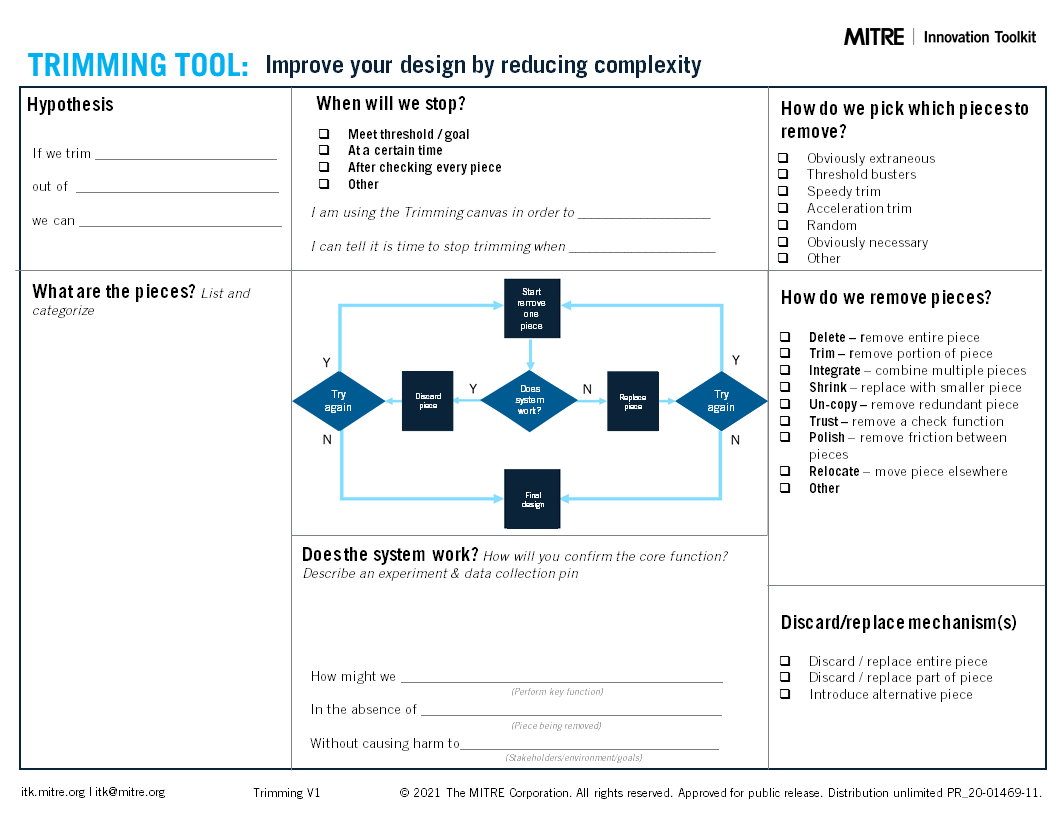Trimming |
 |
What is it
Iteratively remove unnecessary elements from a design using a structured approach to reducing complexity to produce a more elegant, streamlined final product, process, or organization.
Why use it
- Bring clarity to an overly cluttered system with too many components, unwieldy user experience, or lots of steps.
- Streamline a system by removing unnecessary friction or complexities.
- Decide whether to pursue risky removals.
When to use it
When the initial design begins to emerge or when you encounter “too much” of something – steps in a process, options to choose from, documents, PowerPoint slides, requirements for a system, etc.
Level
Intermediate
Outcome
Evaluate
Group Size
4+ people
Suggested Time
60+ minutes
Trimming worksheet

How to do it
STEP 1
List all the pieces included in the current design.
STEP 2
Define a Stop Strategy. Three common Stop Strategies are:
- Threshold strategy – Stop trimming when the system has satisfied some threshold (size, weight, power, etc.).
- Time-box strategy – Stop trimming when a specified amount of time has passed.
- Thorough strategy – Check every single component.
STEP 3
Remove a piece from the list. Common strategies include:
- Obviously extraneous – Remove components that are clearly unnecessary.
- Threshold busters – Remove components that are most responsible for the system exceeding thresholds (e.g., remove the heaviest component if the system exceeds the weight threshold).
- Speedy trim – Remove any component that can be removed quickly, minimizing the amount of time spent on trimming.
- Acceleration trim – Remove any component whose removal will yield a substantially shorter project timeline.
- Random – Randomly remove a component.
- Obviously necessary – Remove a component that appears essential to the system.
STEP 4
Test the system to determine if it works without a piece. If so, discard that piece. If not, replace the piece.
STEP 5
Repeat the process until the Stop Strategy applies.
Benefits
- Structured, repeatable, rigorous process is an excellent introduction to convergent thinking.
- Reduces all types of complexity (processes, tech, system architecture, PowerPoint, etc)
Challenges
The “does it work?” step can be challenging to design and implement.
Combine With
- Lotus Blossom
- After Problem Framing and if multiple HMW statements are generated
